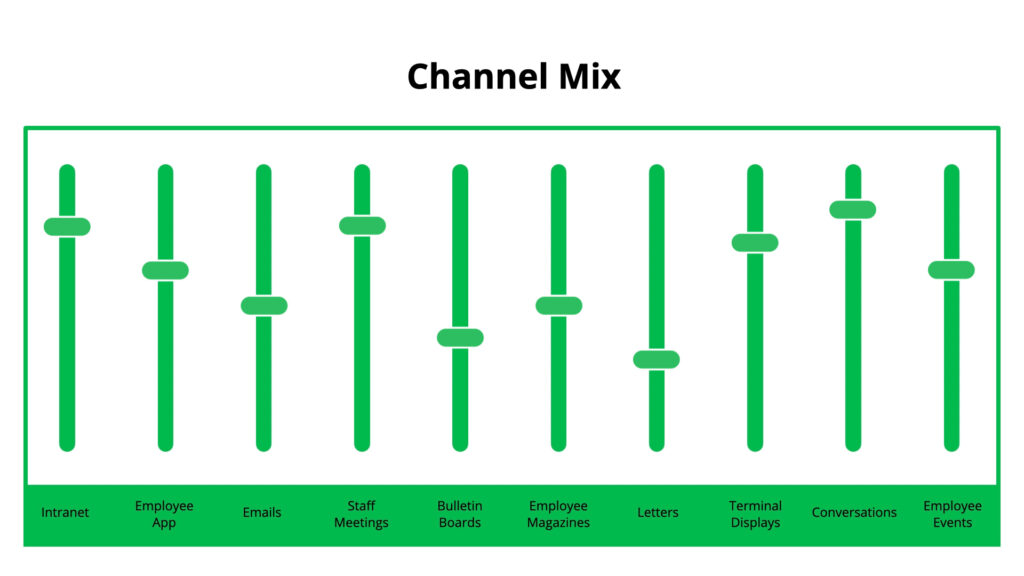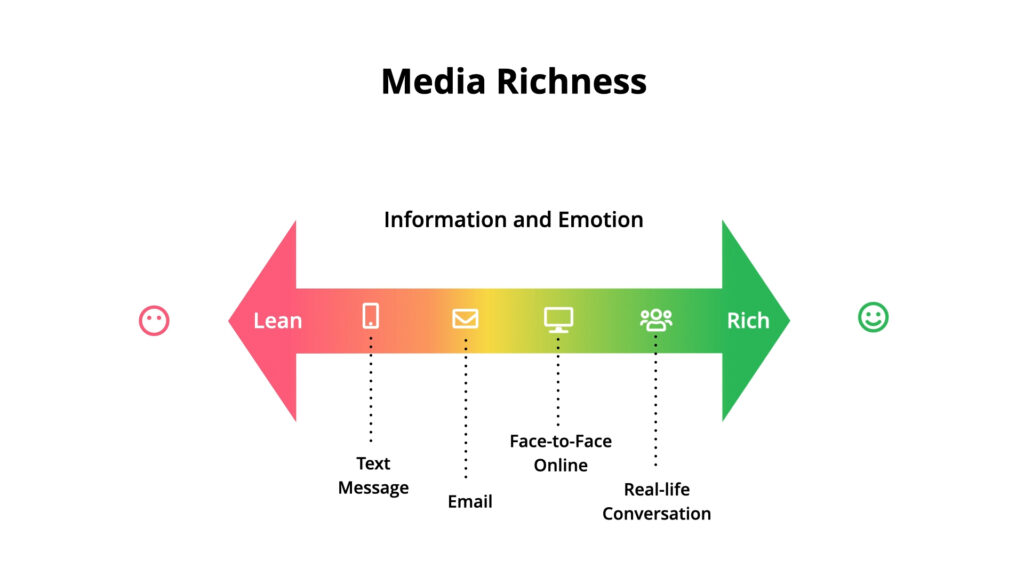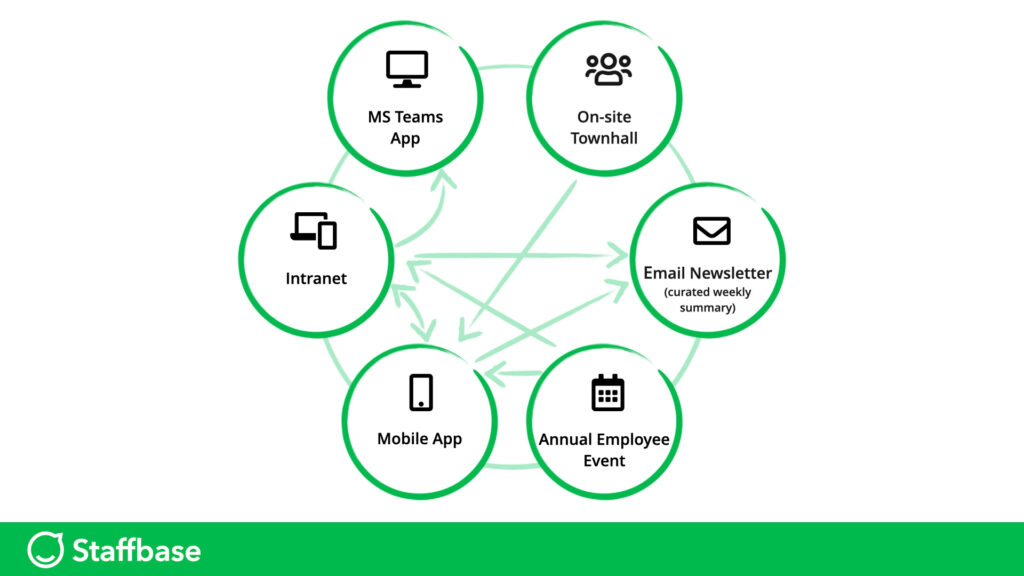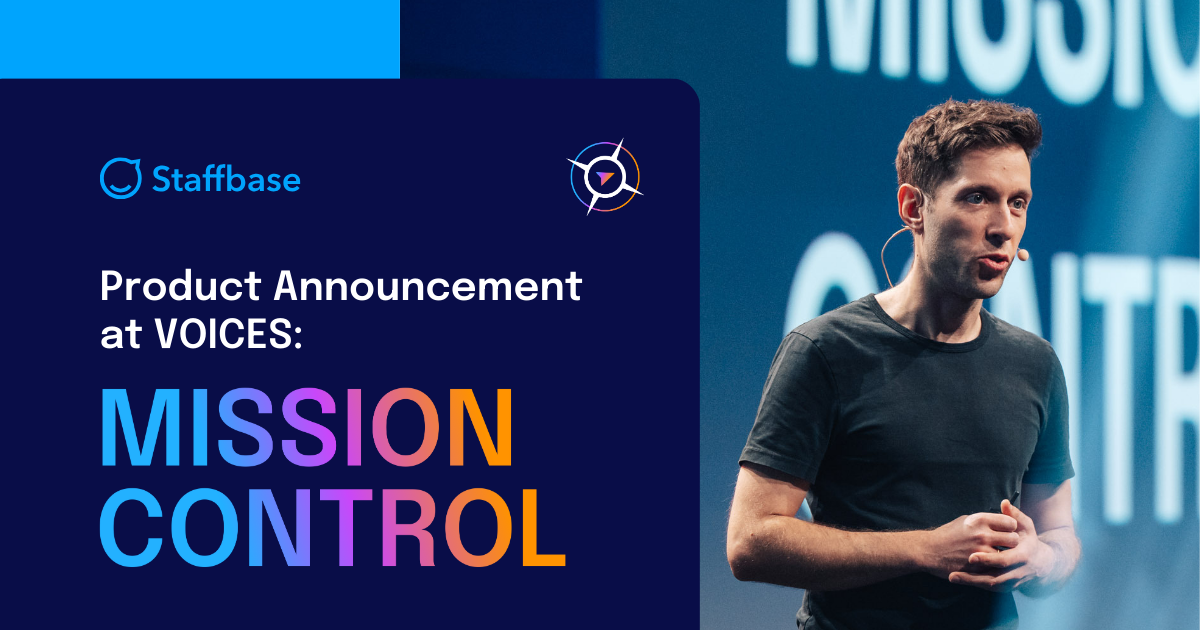It’s Friday afternoon. You're just about to leave the office when you get an urgent two-line text message from your company, informing you about a major organizational change.
Earlier that day, you got a more casual email to celebrate a departing colleague with a warm and personal video.
Why was the more casual message prioritized?
And why was the critical message about your organizational change left to the last minute... with little to no context?
Looks like your company might want to rethink its communication channels use.
So how could the sharing of these messages have been handled better?
Let’s ask the following questions, as covered in our Masterclass on internal comms channels:
- Why do comms need a mix of effective internal communication channels?
- How do you choose the right channel for your message?
- What defines effective internal comms channels?
- How do you manage a channel mix?
1. Why do comms need a mix of effective internal communication channels?
The types of messages internal communicators need to send vary from casual to critical. Some may be easy to share, others are sensitive, and some need to be interactive.
This is where a channel mix comes in. Its purpose is to set up your comms in the channels best suited to the types of messages you’re sharing.

These channels could be:
- A company intranet
- An employee app
- Staff meetings
- Bulletin boards
- Employee magazines
- Letters
- Terminal displays
- In-person conversations
- Employee events

2. How do you choose the right channel for your message?
Media richness refers to the capacity of different media to carry information and emotions. It's viewed on a scale from lean to rich.

A really rich example is a real-life conversation or a face-to-face meeting online. Here, communication is interactive and immediate, which makes it suitable for more complex conversations.
A lean example on the other end of the spectrum would be an email or a text message. These are neither interactive nor immediate.
Lean messages are effective because they reduce noise and information overload. The general rule: The less the chance of a misunderstanding or misinterpretation, the leaner the media you can use.
3. What defines effective internal communication channels?
As an internal communicator, you want to reach the right people with the right content at the right time. And you want to make that content memorable.
You can reach your employees at the right time by supporting rich media, interaction, and matching the expectation that comes with having access to all knowledge at all times — including workplace information. If you consider your company to be modern, you need to opt for the latest digital channels, such as mobile, which can reach workers no matter where they are — desk or non-desk.
To make your content memorable, you should remember that everyone's competing for your audience's attention. Effective internal communication channels need a strong brand and personality in order to stand out, so personalize your message as much as possible.
4. How Do I Manage My Channel Mix?
Managing so many channels at once can seem overwhelming. Effective channel management would mean that you are able to:
- Easily target your content
- Avoid double-publishing. you create your content only once, but be able to use it in different channels
- Stay on top of conversations and feedback across channels
- Measure results across channels
- Delegate content creation and local admin work (but never give up full control)

Resources to help you find the right channel mix
Comms has to communicate many different types of messages, suited for many different types of channels, while also staying on top of everything else.
While this can be a challenge, the right channel mix can make all the difference in making sure your messages are received in the way you intended.
Want to learn more? Check out our full Masterclass here:
We've also created an Internal Comms Strategy Template Collection with helpful templates and links to resources for your internal communication strategy. Click on the image below to download it!

What's next in our Masterclass Series? Check out our Masterclass on choosing the best content format for internal communication.




